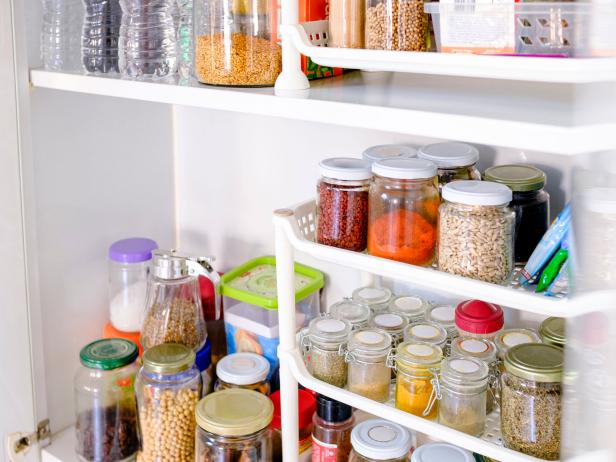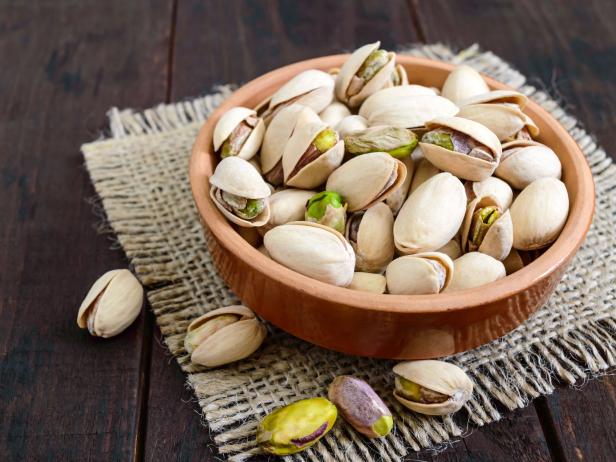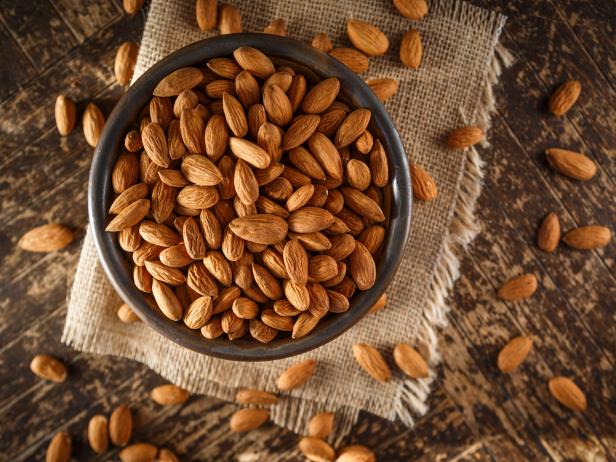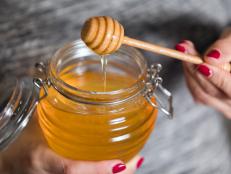7 Pantry Staples for a Pre-Diabetic Diet
Stock up on these foods to make eating for prediabetes easier.

Studio CJ/Getty
According to the Centers for Disease Control (CDC), more than 1 in 3 Americans have prediabetes. What’s concerning is that the CDC states that of those with prediabetes, more than 80% don’t know they have it. Prediabetes means one has higher than normal blood sugars, but not high enough to be diagnosed with diabetes. Prediabetes puts one at a high risk of developing several chronic diseases including type 2 diabetes, heart disease and stroke.
If you have prediabetes, that doesn’t necessarily mean that you’ll develop type 2 diabetes. Small healthy changes can make a huge impact on delaying or preventing diabetes altogether. Stocking up on certain foods at home can help ensure that you’re making healthier choices and hopefully help delay or prevent the onset on type 2 diabetes. Below are seven foods to stock up on if you have prediabetes, according to registered dietitians who are experts in prediabetes.
Canned Beans
"[Research shows that] long term consumption of about 5 cups of beans per week can yield consistently lower blood sugar levels as well as a reduction in the risk for cardiovascular disease which is a significant issue in people with prediabetes and diabetes,” says Lauren Harris-Pincus, MS, RDN, author of The Everything Easy Pre-Diabetes Cookbook. These benefits are most likely due to the high amount of fiber found in beans which can increase fullness. If you’re feeling full, that can help reduce food intake and help with weight management. “This combo can improve blood sugar levels and reduce the risk of progression to diabetes from prediabetes.”
Harris-Pincus recommends enjoying beans in a breakfast burrito, tossed into a green salad, or in soup. You can also enjoy homemade black bean burgers, or in chili or whip up black bean brownies for dessert. If you are concerned about the sodium, Harris-Pincus says to “buy a low sodium variety or drain and rinse them very well to reduce the sodium content up to 40%.”
Lentils
“Lentils have a very low glycemic load resulting in lower blood glucose levels,” says Lorena Drago, MS, RDN, CDN, CDCES. Lentils are rich in polyphenols that can reduce the incidence of diabetes, heart disease, obesity, and some types of cancers. Enjoy lentils in soup, on a green salad, or in burgers. “If gas and bloating are preventing you from including lentils in your diet, soak them overnight,” recommends Drago.

Maryna Iaroshenko/Getty
Pistachios
“A systematic review has shown that eating about 2 ounces of pistachios a day for about 1 to 4 months can decrease fasting blood glucose and improve insulin resistance,” says Drago, and that’s just part of the reason she recommends them for people with prediabetes. Pistachios also contain mono and polyunsaturated fats making them heart healthy. Snacking on about 2 ounces of pistachios a day can confer benefits to your blood pressure and cholesterol levels.
Oats
Bestselling author Jill Weisenberger, MS, RDN, CDCES, CHWC, FAND, creator of the free guide Can I Eat That with Prediabetes? recommends oats as it’s one of the “only foods with appreciable amounts of a unique fiber called beta-glucan that helps improve insulin action and lowers blood sugar. This fiber also lowers cholesterol, so it does double duty. And that’s important because prediabetes and diabetes are risk factors for heart problems.” Enjoy oats in muesli, oatmeal, and overnight oats.
Barley
Weisenberger also recommends barley for the same reason as oats listed above. It’s the other food that has an appreciable amount of beta-glucan, that helps improve insulin action and lowers blood sugar. Enjoy barley as a side dish, in soup, or in homemade veggie burgers.

LindasPhotography/Getty
Almonds
“Ounce for ounce, almonds are the tree nut with the most fiber (4 grams) and offer 6 grams of plant protein along with healthy monounsaturated fat in every handful,” Toby Smithson, RD diabetes lifestyle expert, author of Diabetes Meal Planning and Nutrition for Dummies and consultant for the Almond Board of California. Smithson explains that due to the nutrient makeup in almonds, they help keep you satisfied and even give you steady blood sugar for the next meal. “Almonds also can improve insulin sensitivity and keep your lousy cholesterol (LDL) at bay which are all important factors of prediabetes management,” Smithson explains. Sprinkle chopped almonds on yogurt or oatmeal, use in a smoothie, or enjoy as is. Almonds are a shelf stable nut and can be stored for up to 2 years if unopened or your opened bag can be placed in the freezer to maintain freshness.
Berries
Most of our experts had berries on their pantry list. Studies have found that eating berries is associated with a decreased risk of type 2 diabetes. “We don’t know exactly why, but berries give us fiber, vitamins, antioxidants and anti-inflammatory compounds,” says Weisinberger. Weisinberger recommends having berries is to “mix them into yogurt, which is another nutritious food linked to less risk of developing diabetes.” Harris-Pincus recommends buying frozen varieties if you’re worried the fresh will spoil. This can help save money and minimize food waste. Plus, you have access to frozen berries all year round.
Toby Amidor, MS, RD, CDN, is a registered dietitian and consultant who specializes in food safety and culinary nutrition. She is the author of The Greek Yogurt Kitchen: More Than 130 Delicious, Healthy Recipes for Every Meal of the Day.
*This article was written and/or reviewed by an independent registered dietitian nutritionist.
Related Links:

































